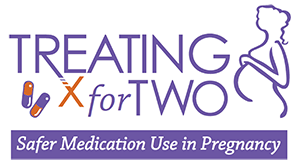Key Findings: Antidepressant Prescription Claims among Reproductive-aged Women
CDC’s Morbidity and Mortality Weekly Report published a new study looking at how often women aged 15-44 years filled a prescription for an antidepressant medication. CDC researchers found that about 15% of women aged 15-44 years (or about 1 in 7) with private health insurance filled a prescription for an antidepressant. Antidepressants are medications commonly prescribed to treat depression and other mental health conditions. Previous studies provide conflicting evidence about potential links between antidepressant use and certain birth defects. Birth defects can happen very early in pregnancy, often before a woman knows she is pregnant. These new findings highlight how important it is for all women to talk with their healthcare provider about the safety and risks of taking specific antidepressants. Read the article, Antidepressant Prescription Claims among Reproductive-Aged Women — United States 2008-2013.
About this Study
- Researchers used 2008-2013 data from a large insurance claims dataset of privately insured individuals for this study.
- Researchers looked at antidepressant prescriptions filled at outpatient pharmacies by women aged 15-44 years.
- Researchers also looked at how prescriptions varied by the age of the woman, geographic region, and the specific antidepressant type.
Main Findings
- During 2008-2013, each year about 15% of privately insured women aged 15-44 years (or about 1 in 7) filled a prescription written by a healthcare provider for an antidepressant.
- The most commonly prescribed antidepressants were sertraline (Zoloft®), bupropion (Wellbutrin®), citalopram (Celexa®), escitalopram (Lexapro®), and fluoxetine (Prozac®).
- Women aged 40–44 years were most likely to fill prescriptions for an antidepressant when compared with women of other ages. Women aged 15–19 years were least likely to fill prescriptions for an antidepressant.
![[Infographic] About 1 in 7 women of reproductive age take an antidepressant.](images/1in7-treatingfortwo-500px.jpg)

Importance of this Study
Many women need to take antidepressants during pregnancy. More work is needed to provide information based on the best available medical evidence to healthcare providers and women about the potential risks of antidepressant use before and during pregnancy. Abruptly stopping some medications can have serious consequences. That is why it is important for women to talk with their healthcare provider about the potential risks of medication use during pregnancy. Conversations with healthcare providers can help women make informed treatment decisions.
Medication Use during Pregnancy: CDC’s Activities
CDC’s National Center on Birth Defects and Developmental Disabilities (NCBDDD) is working to improve the health of women and babies. Through its Treating for Two: Safer Medication Use in Pregnancy initiative, CDC is working with its partners, other federal agencies, and the public to
- Understand trends in medication use among pregnant women and women of reproductive age; and
- Provide women and healthcare providers with information about the safety or risk of using specific medications during pregnancy.
This information will allow women and their healthcare providers to make informed decisions about treating health conditions during pregnancy.
Treating for Two focuses on the following activities:
- Better research: Expanding and accelerating research to fill gaps in knowledge about medication use before and during pregnancy.
- Informed decisions: Delivering up-to-date information to support decision-making among prescribers, pharmacists, and the public.
- Reliable guidance: Evaluating scientific evidence to provide reliable guidance.
More Information
For more information, visit www.cdc.gov/treatingfortwo.
For resources on depression in pregnancy from March of Dimes, visit http://www.marchofdimes.org/complications/depression-during-pregnancy.aspx
References
Dawson AL, Ailes EC, Gilboa SM, Simeone RM, Lind JN, Farr SL, Broussard CS, Reefhuis J, Honein MA, Carrino G, Biermann, J. Antidepressant Prescription Claims among Reproductive-Aged Women – United States 2008-2013. MMWR. 2016 Jan 28; 65(3): 41-46.
- Page last reviewed: January 28, 2016
- Page last updated: January 28, 2016
- Content source:


 ShareCompartir
ShareCompartir
